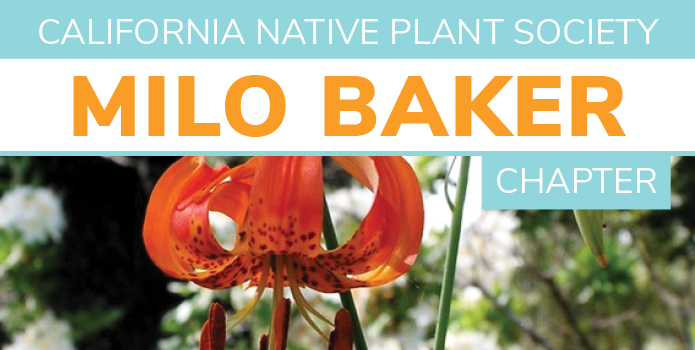In this issue: Speaker Series, Message From the President, Rincon Ridge Update, Become a Fire Follower,
In the April Garden, Member Spotlight, and Volunteer Opportunities. |
| Coastal Dune Restoration -- When is Removal of Invasives Simply not Enough? |
Lorraine Parsons - Vegetation and Wetland Ecologist Point Reyes National Seashore
Speaker Series, April 20, 2021 at 7:30pm via ZOOM |
Zoom link will be emailed the day of the event.
Many restoration projects involving non-native invasive plants strictly focus on just removing plants. However, invasive plants don't just supplant native species; they can also affect other ecosystem dynamics, including soil chemistry and microbial communities. Since 2001, Point Reyes National Seashore has been moving forward with an ambitious program of dune restoration to benefit 11 federally listed threatened and endangered plant and animal species that inhabit this coastal habitat. As of 2009, more than 60% of the Seashore's 2,200 acres of coastal bluff, dune, and scrub habitat had been invaded by non-native European beachgrass (Ammophila arenaria) and ice plant (Carpobrotulis edulis). As of 2021, the park has removed 271 acres of European beachgrass and ice plant from 525 acres of dune habitat at Abbotts, AT&T, and B Ranch. However, early post-restoration results suggested that invasives removal alone was not sufficient to restore functioning native coastal dune ecosystems, regardless of the restoration approach utilized. To determine whether European beachgrass had more pervasive effects on dune systems than just native plant displacement, the Seashore collaborated with the University of Arizona and University of California, Davis, researchers on a microbial study that found that native dunes had very different assemblages of bacteria and fungi than invaded dunes or restored ones. Both changes in microbia and chemistry appeared to persist even after restoration, leaving a "legacy effect" that may impede efforts to successfully restore coastal dunes. The Seashore is continuing to work with researchers at University of Arizona to better understand changes in microbial communities and intends to use information from these studies to plan adaptive restoration projects to improve success of coastal dune restoration efforts at Point Reyes.
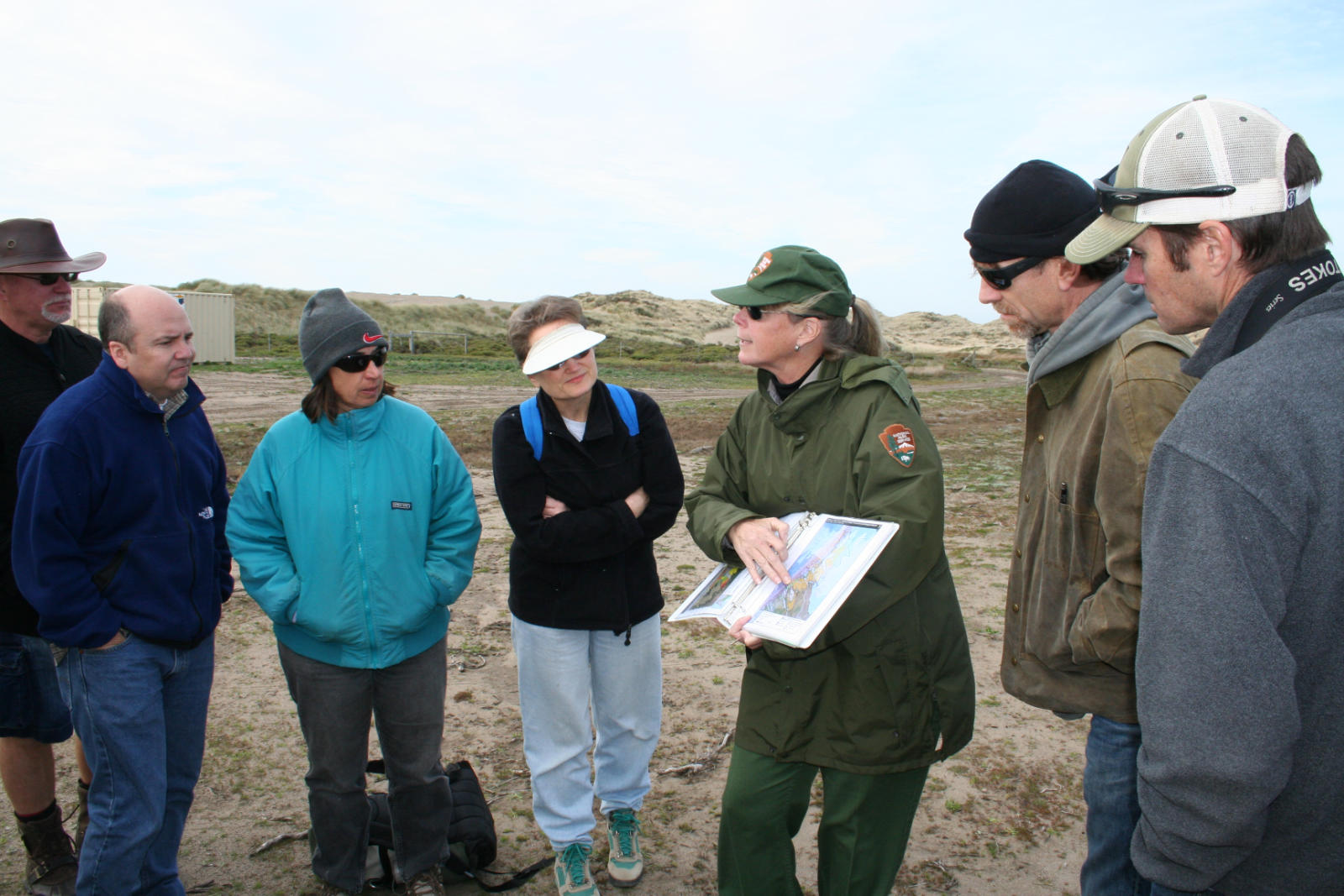
Lorraine Parsons leading a dune field trip
Lorraine Parsons is the Vegetation/Wetland Ecologist at Point Reyes National Seashore. She has been with the National Park Service (NPS) for 20 years. While at the NPS, she has worked on several very large restoration projects, including the Giacomini Wetland Restoration Project and the Abbotts Lagoon Coastal Dune Restoration Project. Prior to the NPS, she worked at the Sonoma County Water Agency and in consulting. A native of southern California, she attended University of Southern California where she earned a dual degree in Biology and Journalism. She worked several years as a science and business reporter before returning to school to earn a Master's in Ecology from San Diego State University, where she studied biotic and abiotic factors affecting reproductive potential and success of an endangered salt marsh annual, salt marsh bird's-beak (Chloropyron maritimum ssp. maritimum). One of her favorite plants at the Seashore -- understandably -- is Point Reyes bird's-beak (C. m. ssp. palustre). Contact: Lorraine_Parsons@nps.gov
Speaker Calendar 2021
April: Lorraine Parsons, Microbial Communities in Dune Restoration
May: Trish Tatarian, Ecology of California Tiger Salamander
June: Shane Hanofee, Botanizing Nevada and Placer Counties
September: Cynthia Powell, ED, Calflora.org, Entering Sonoma County Plants
|
|
Message from the Chapter President
One essential aspect of living through the last year in Sonoma County has been our amazing ability to get outside to enjoy the sunshine, clear air, and our lovely plant life. Much has been written about this and about the renewed appreciation for science whether in developing new vaccines or research on climate change. As plant lovers we can especially understand the need to preserve our native plant habitats and gardens, for so many reasons.
Some of the Milo Baker chapter members have stepped up to become involved in our work. Not only do we have new Board member energies but also interest in conservation issues. In the last several months the chapter has sent in comment letters to County agencies. One, opposing aspects of the proposed Cannabis Ordinance and General Plan Amendments that bypass the CEQA process and enable cannabis operations in greenhouses and hoop houses with only a mitigated negative declaration permit. Another letter opposes the development of biomass energy production. Still another, calls on the County to issue a tree cutting moratorium until there is further review of a tree ordinance. Further, we commented on the timber harvest plan near Guerneville and the Russian River. We now have a robust Conservation Committee comprising 8 members!
Another activity for the Committee is to participate regularly at the state CNPS level. Recently the monthly phone call has expanded to four additional working groups, each on a topic. This has come about because of different chapters concerns and the need to study each area more thoroughly. The four topics are OHV policy, dune/coast protections, vegetation treatment/fire issues, and cannabis ordinance policy. Milo Baker has attended meetings on the last two topics.
As always, we welcome any and all interest in our work. Please contact one of us if you have input, questions or want to be involved. Enjoy the height of wildflowers in April and watch for your fellow hiking and gawking CNPS members!
Wendy Smit,
Chapter President |
|
Rincon Ridge Update
|
Surrounded by construction and the quickening pace of Santa Rosa rushing onward into the future is a piece of nature that asks us to stop and remember the past. It is a place like none other in the midst of multi-level million-dollar homes and construction crews. The soil is reddish, dry, and rocky; few large trees remain and those that do are blackened, reminders of a disturbance that caught everyone off-guard and sent people running in the middle of the night. The Tubbs Fire started October 8, 2017 in the next county and within hours had burned 36,810 acres and taken 22 human lives.
This little scrap of nature though, 3 years later, tells a story of recovery and even longer story of California. Looking out across the 2 acres, the bushes are low, only knee to hip-high, and seem fairly nondescript, mostly woody shrubs with small evergreen leaves. Walk among the plants though, and variety begins to show itself—here is chaparral amid oak woodland, Douglas-fir forests, and endless variety of plants that humanity have chosen to adorn their front yards and pathways.
Chaparral species in general, require fires to endure. Seeds of ceanothus and manzanita require at least a medium intensity fire to trigger germination. Their continued presence is a nature-made historical marker that informs us that fire has existed in the landscape, in this case, a 1964 fire, the Hanley Fire, that occupied an eerily similar footprint to the 2017 Tubbs Fire (and possibly a 1923 fire event as well).
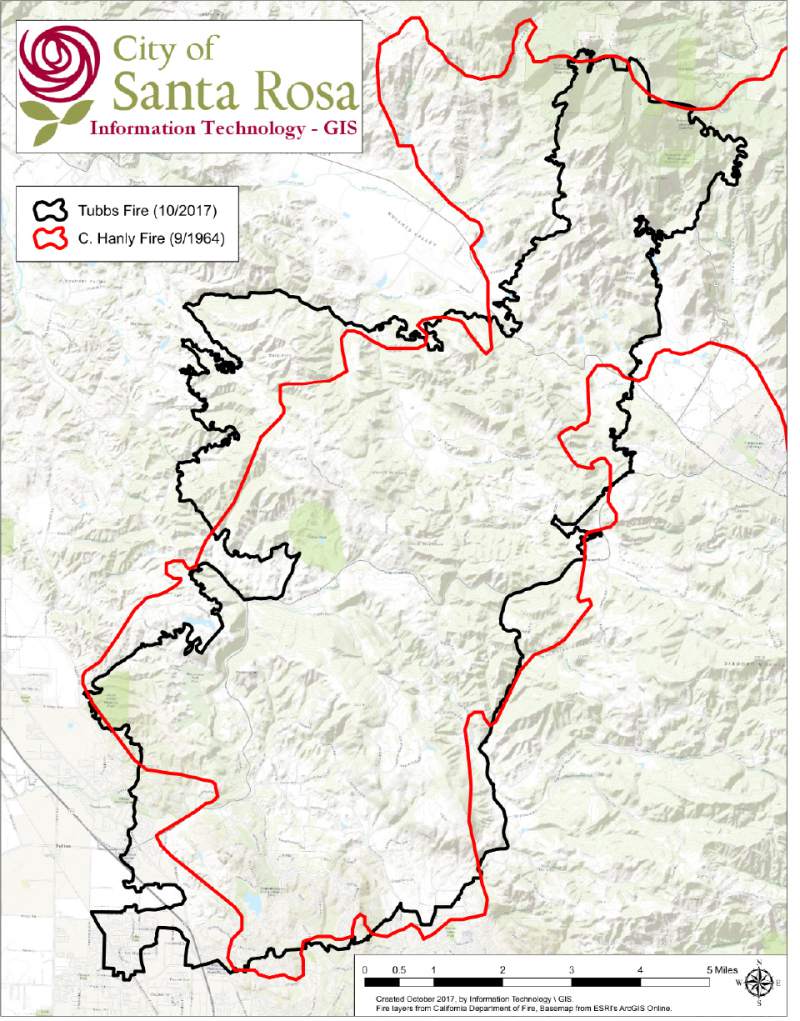
The chaparral plants that re-occupied Rincon Ridge Preserve are so special to this place that they are found almost nowhere else. There are two ceanothus species, growing shoulder to shoulder: wavyleaf ceanothus (Ceanothus foliosus var. foliosus) and the Rincon Ridge ceanothus (Ceanothus confusus). The bigger wavyleaf ceanothus is already knee high and the most common shrub here; it quickly recolonizes after fire. The leaves are a dark glossy green with crenulated alternate leaves. The other ceanothus, is mostly found only here on this hilltop; the Rincon Ridge ceanothus is extremely low growing and rarely reaches taller than the top of your boot. It hugs the ground. Its low-growing habit distinguishes it from other opposite leafed ceanothus with its stem occasionally taking root. Three years later after the fires, on the first day of Spring, a select few of the ceanothus are starting to flower, both species’ blooms a mesmerizing sapphire blue.
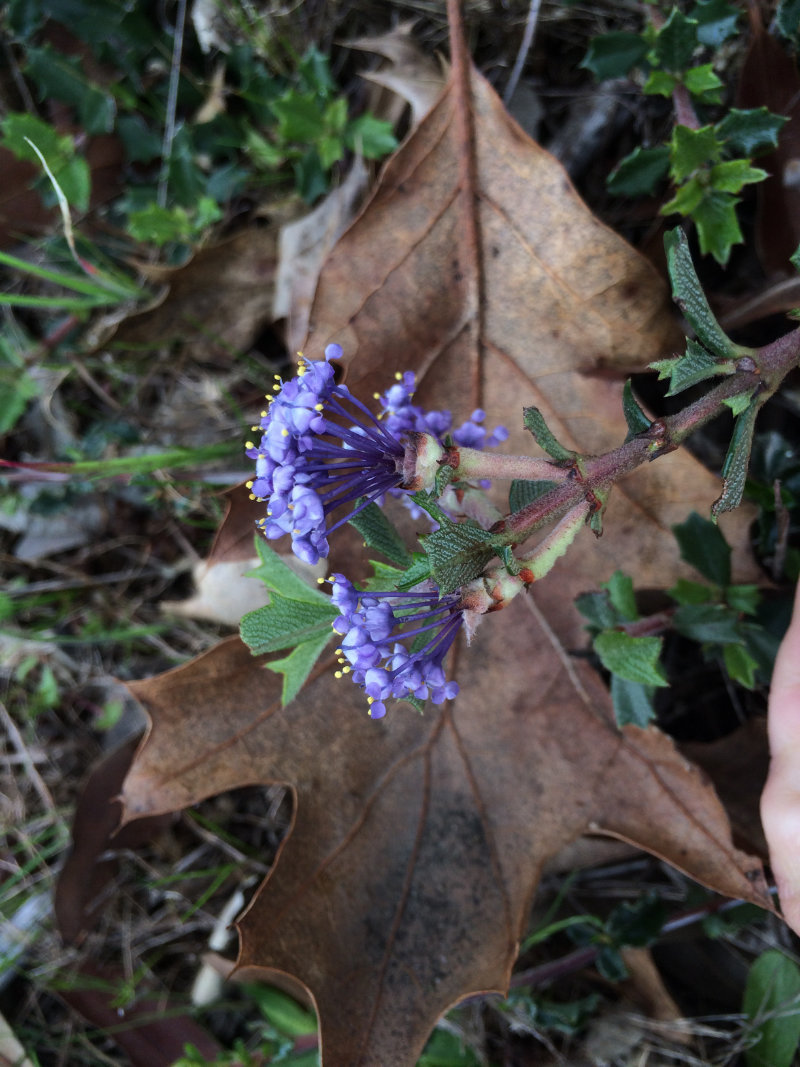 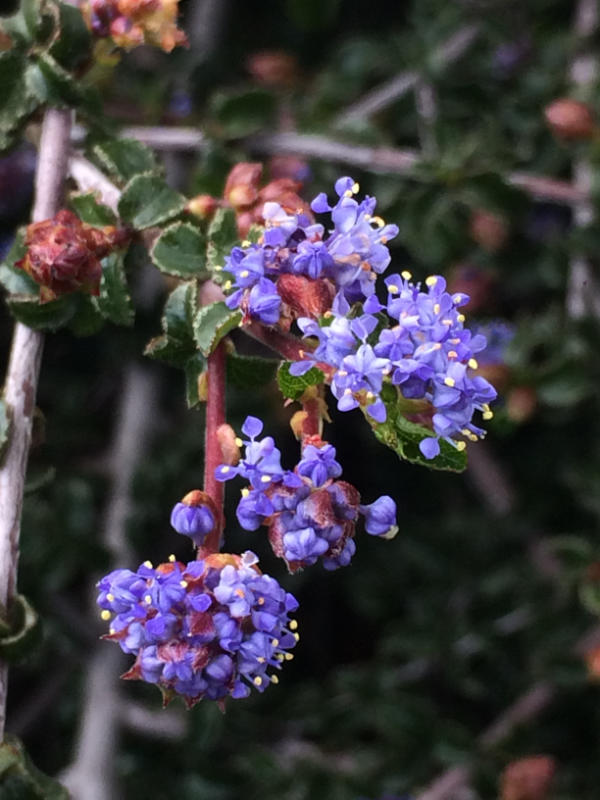
Left: Rincon Ridge ceanothus (Ceanothus confusus) Right: wavyleaf ceanothus (Ceanothus foliosus var. foliosus), Michelle Carle
While the ceanothus’ blooms have just begun, the manzanitas’ floral display is coming to a close. The taller common manzanita (Arctostaphylos manzanita ssp. manzanita) will become one of the most noticeable plants over time. But special to this place is a smaller manzanita, with little dark pink flowers like inverted tear drops and branches with an aspect so relaxed, if they were human, they would casually be holding a martini on a lazy afternoon. The Rincon manzanita (Arctostaphylos stanfordiana ssp. decumbens) only reaches about knee-height and once you’ve developed an eye for it, with its smaller size and bright green leaf, you see by its numbers, how much it loves this piece of rocky hilltop.
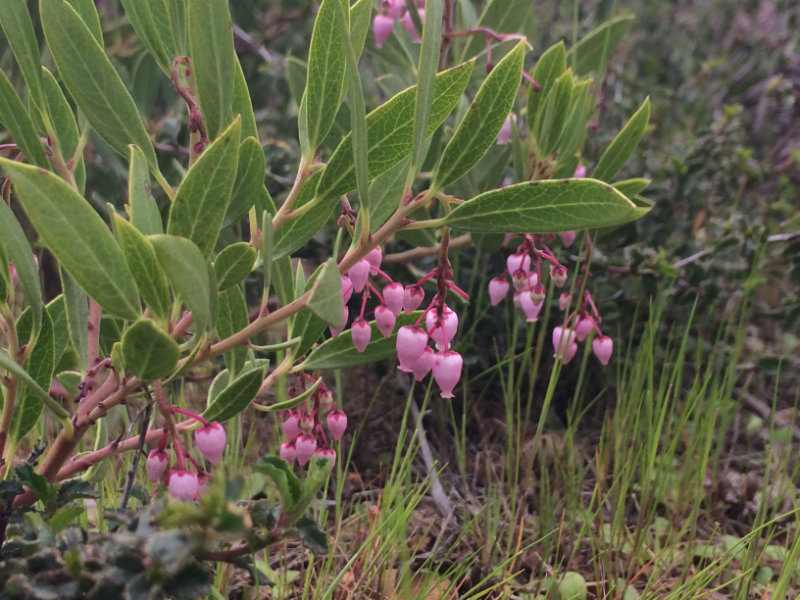 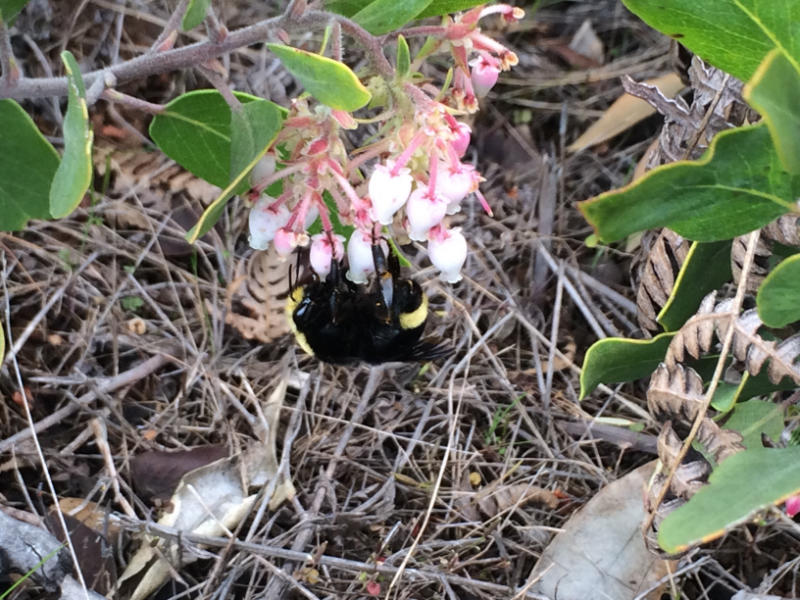
Left/top: Rincon manzanita (Arctostaphylos stanfordiana ssp. decumbens) Right/bottom: Arctostaphylos glandulosa, Michelle Carle
Mixed in are other rare plants and chaparral specials: Diogenes’ lantern, iris, Napa lomatium, coyote mint, bracken fern and pine violet. Also present are the classic chaparral plants: chamise, interior live oak, black oak, Douglas-fir, bay laurel, madrone, chaparral pea, toyon, coffeeberry, poison oak, and a lonely silktassel. Multiple plant lists reside on the Milo Baker website.
Currently our CNPS volunteers have been working hard to fight encroaching weeds; Jan Lochner and crew deserve endless thanks for their time, attitude, and energy. The property is city-owned and there is a split-rail fence planned for later this summer. Future plans allow for closer access to the plants, hopefully giving residents and the public a better view of these special plants and with that experience, deeper appreciation, and a desire to protect.
Plant walks will happen!! “Don’t know where, don’t know when, but I know we’ll meet again, some sunny day!” (Parker, Charles, 1939)
Special thanks for recent helpers: Jan Lochner, Penny Dalton, Betty Young, Natasha Granoff, Karen Thompson, Alynn Kjeldson, Jim Piercy, Cheryl Davey, Amy Patton, Morgan Stickrod, Joe Joe Clark.
Michelle Karle
Milo Baker Rincon Ridge and Southridge Preserves
|
Become a Fire Follower!
|
|
Become a Fire Follower! The California Native Plant Society has launched a new statewide community science project to document plant species in areas that burned in the historic 2020 wildfires. A natural component of California's ecosystem, fire awakens dormant seeds that often lay quiet in the soil for decades before for the heat, smoke, and nutrients realeased from fire trigger germination.
We encourage you to join this statewide effort and help gather observations on the "pyrodiversity" of California's amazing flora. Head outside this spring and share what you find!
Pictured below are wildflowers that germinated in chaparral following the October 2017 Tubbs Fire at Pepperwood Preserve, Sonoma County.
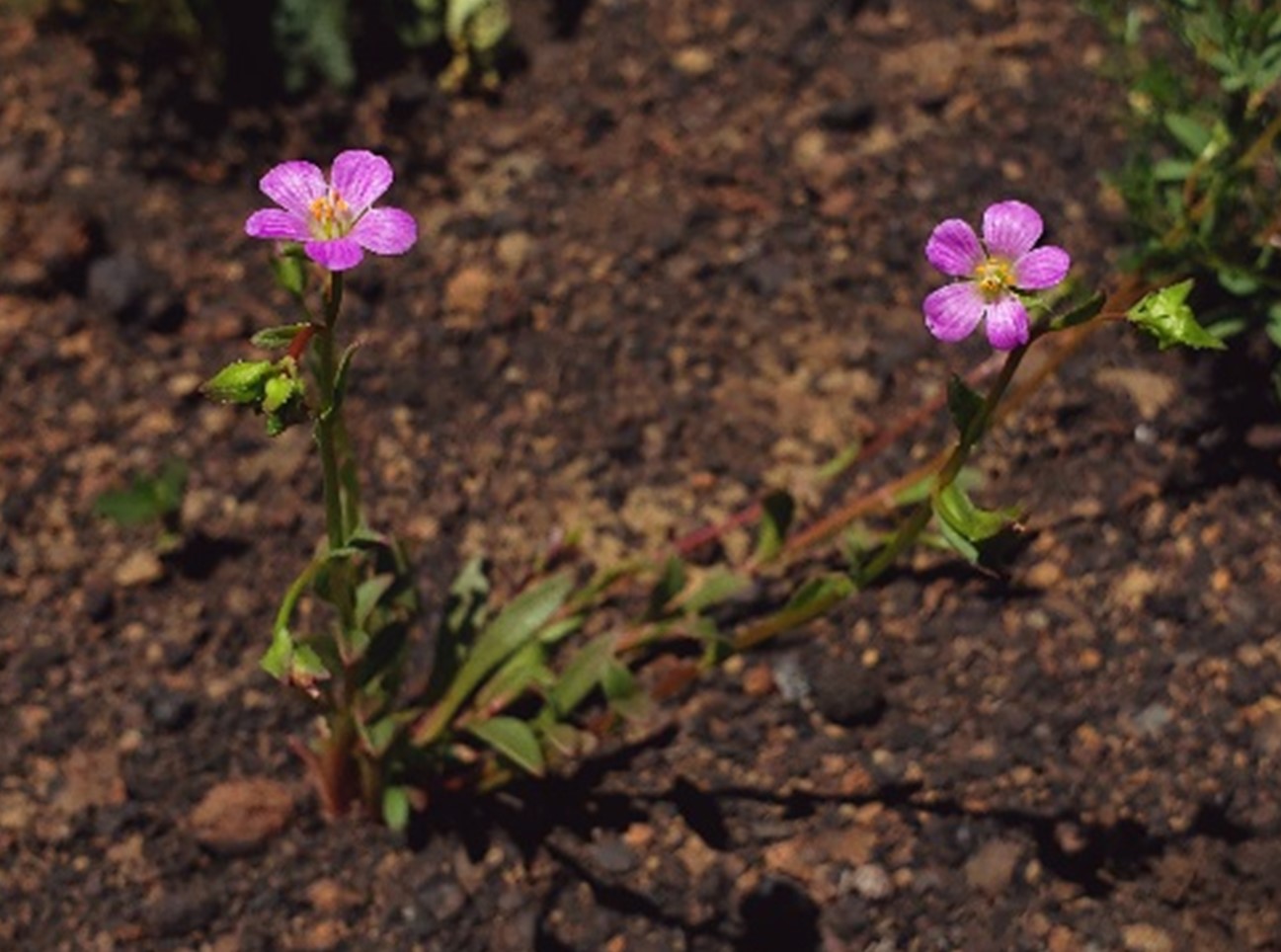
Brewer’s redmaids – Calandrinia breweri – CNPS Rare Plant Rank 4.2 (limited distribution) – Photo by Nomad Ecology
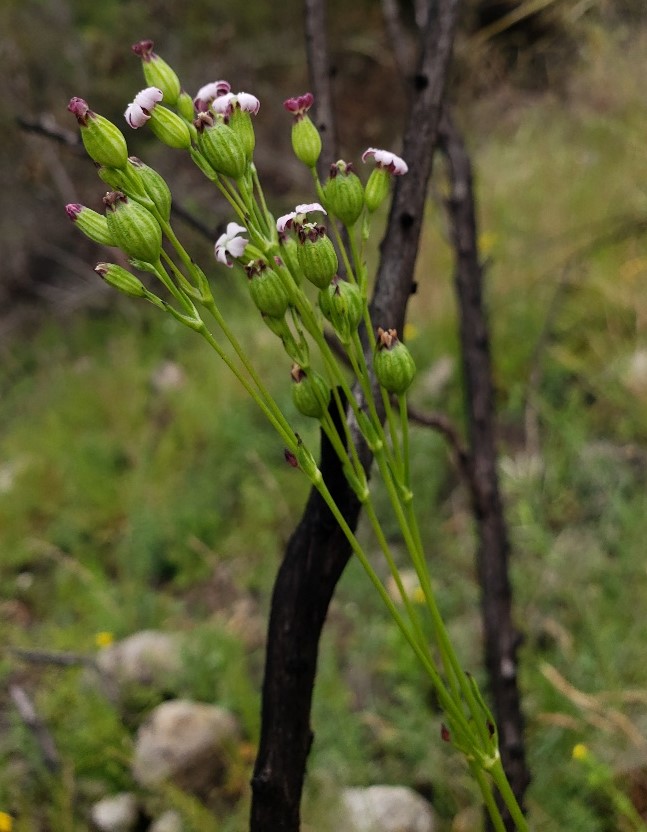 
Catchfly – Silene antirrhina – Photos by Nomad Ecology

Blue toad flax – Nuttallanthus texanus – Photo by Nomad Ecology
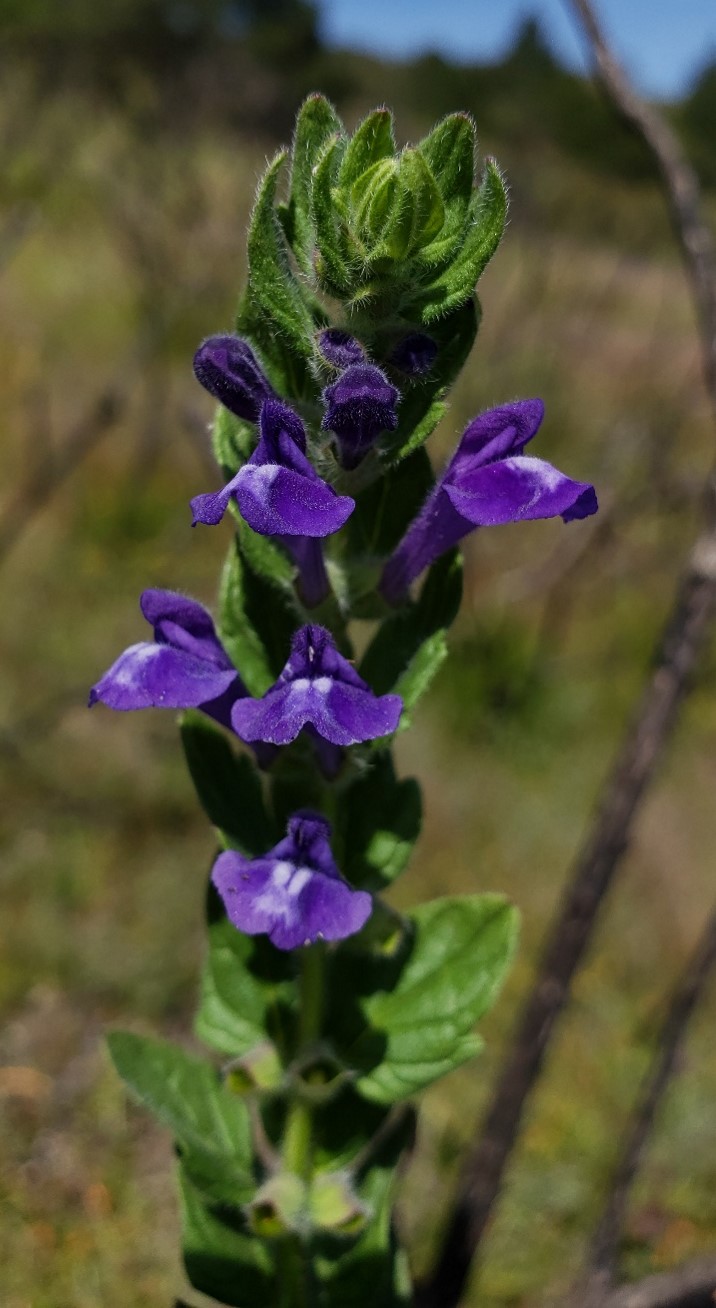
Skullcap – Scutellaria tuberosa – Photo by Nomad Ecology

Venus’ looking glass – Githopsis specularioides – Photo by Nomad Ecology
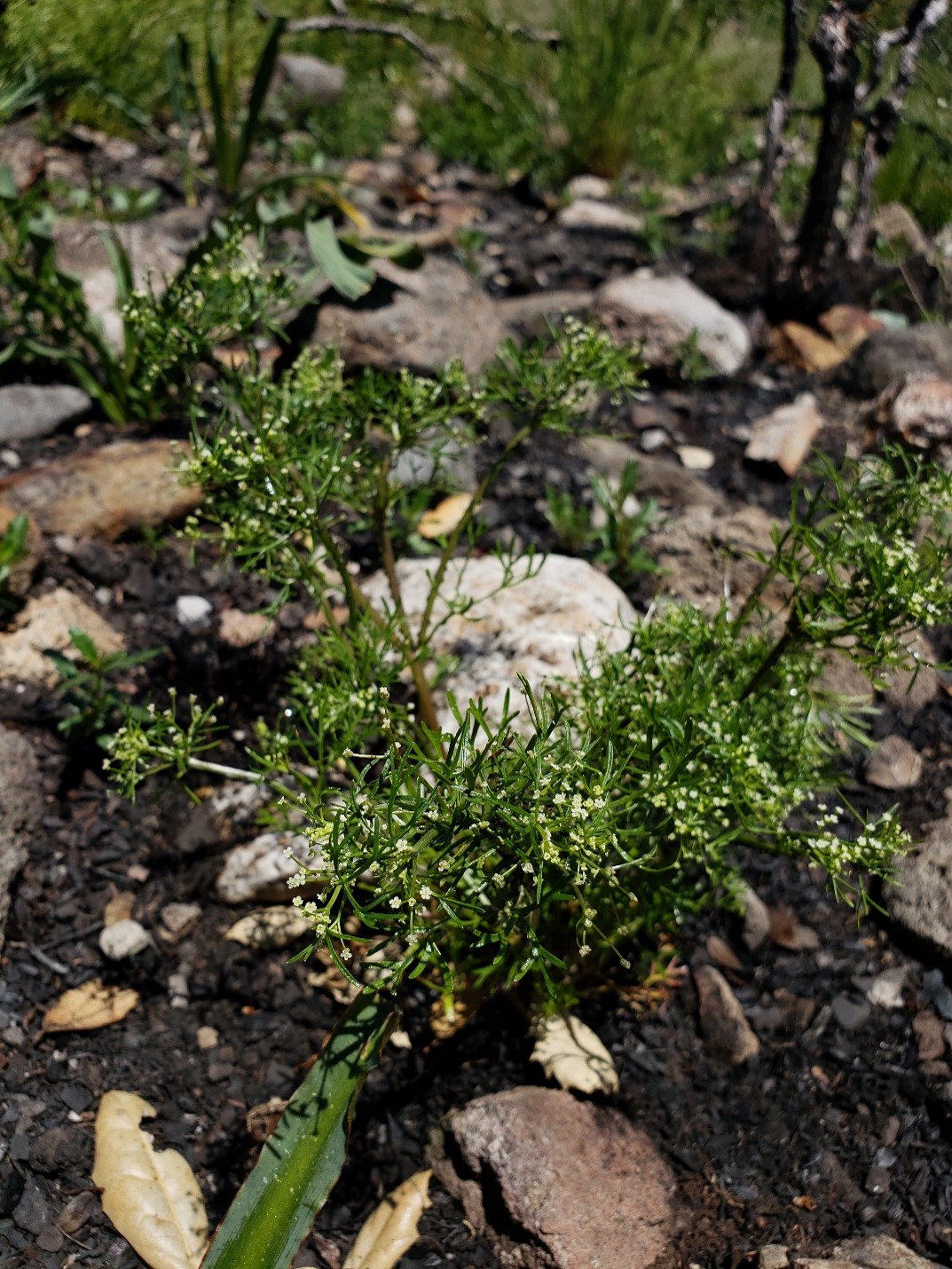
Wild celery – Apiastrum angustifolium – Photo by Nomad Ecology
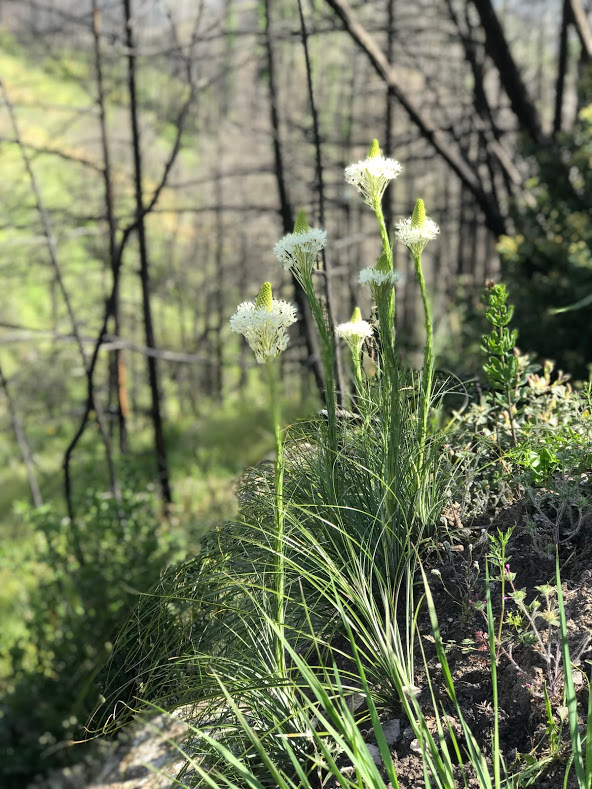
Beargrass – Xerophyllum tenax – Photo by Michelle Halbur
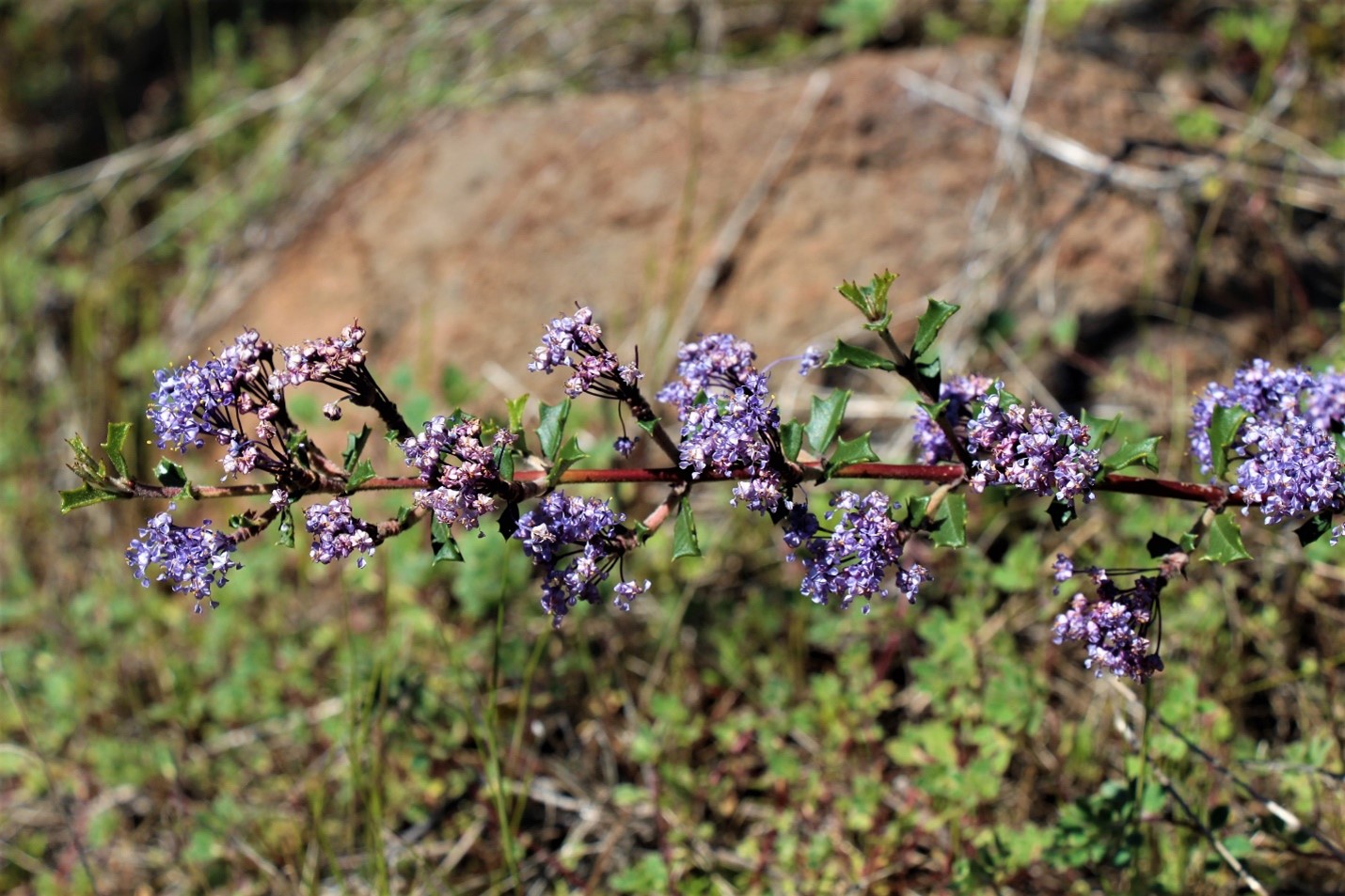
Calistoga ceanothus – Calistoga divergens – CNPS Rare Plant Rank 1B.2 (rare, threatened or endangered in CA and elsewhere)
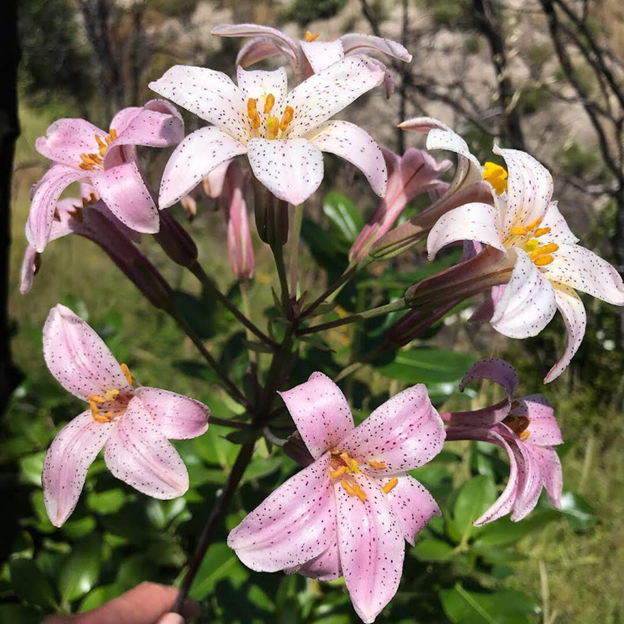
Chaparral or redwood lily – Lilium rubescens – CNPS Rare Plant Rank 4.2 (limited distribution) – Photos by Michelle Halbur
|
|
Pacific Coast Native Iris
Lovers of California native plants are lucky to have a special native iris. If the tall-bearded iris is the queen of the garden, the natives are the pixies. Called PCN’s for Pacific Coast Native Iris, they are distributed along the coast and in the Coast Ranges from southern Washington to near Santa Barbara, CA. Inland they can be found on the western slopes of the Cascades in Oregon and Washington and the Sierra Nevada in CA. In Sonoma County we have four species: I. douglasiana, I. fernaldii, I. purdyi, and I. macrosiphon and in our gardens, we can grow them with ease.
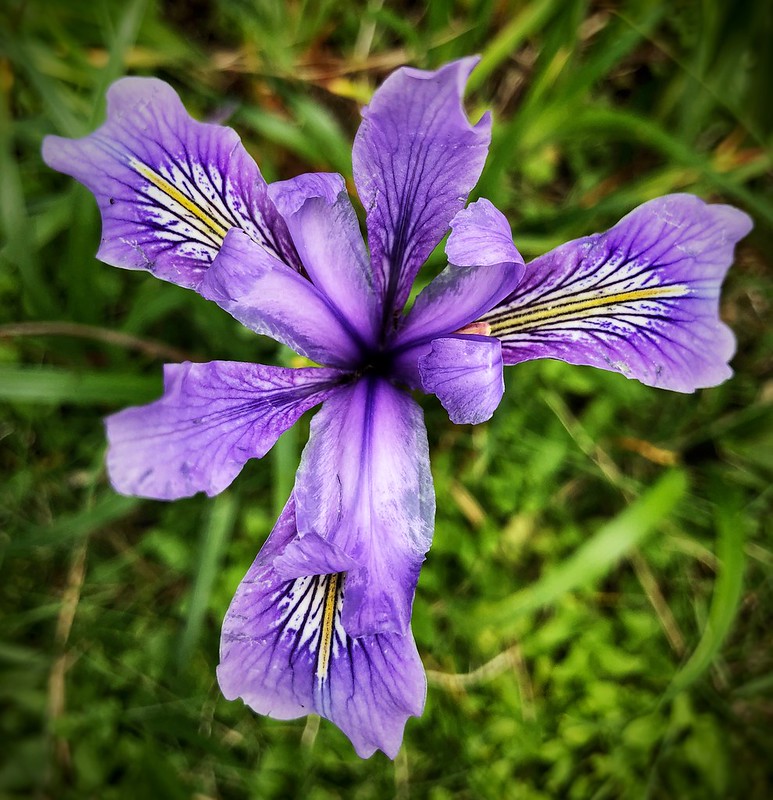
Pacific Coast Iris, Photo credit: Shelby L. Bell
PCN’s are a part of a special beardless iris group, which includes the Siberians, the Spurias and the Japanese iris. PCN’s have a diverse color range from cream, buff, apricot or golden yellow to orchid, lavender, deep purple, and rarely blue and white. Iris flowers are complex. The floral segments that droop down are botanically the sepals but often referred to as the falls. The upright segments are botanically the petals but are referred to as the standards. The falls are usually patterned with veins of brown, maroon, red and often have yellow spots. The diverse range of color and patterns can exist within a species in the wild and in cultivated hybrids. The flowers are simply spectacular.
David Douglas is credited with first discovering the PCN’S. Thus, the most widely distributed species was named for him...Iris douglasiana. “Discovered” is not exactly correct because the local native Americans had long been using the strong leaf fibers for fish nets. Eventually 14 species and six sub-species were named.
Their drought tolerance is excellent as they are summer dormant. The species of iris (as opposed to horticultural varieties) need little summer water once established; however, the hybrids do best with regular summer water. PCN’s can be grown for the rock garden, for the front of the native perennial border, or for naturalizing in a woodland setting under oaks. Their leaves are seldom higher than 18 inches. They bloom from late February to early April.
Cultural requirements: PCN’s are very easy to grow in part shade. They prefer well-drained, slightly acid soil (pH 6.5) with humus or compost added. Oak leaves, pine needles, or peat moss are all good soil amendments to improve the acid condition of the soil. At planting time the addition of a tablespoon of superphosphate is recommended. They do well without much additional feeding. They do not need frequent dividing like the bearded iris and may be left in the ground to slowly increase over the years. If you do want to divide or move them, late winter is the best time. Wait until you can see large new white roots forming at the base of the leaf fans; this shows that they are actively growing, then proceed to separate into new plants. As with all new plants, water until well established.
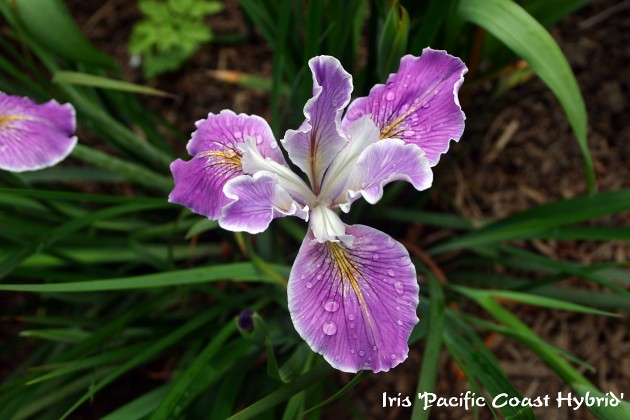
Pacific Coast Iris, Photo credit: Kategardenphotos
Seeds are easy to grow when started in the fall or early spring and take about two months to germinate. Stratifying for two months in the refrigerator will also give good germination. They bloom in the second season. Hybridizing can be quite fun since results can be seen so quickly. My plants re-seed in the paths and, since I grow many different colors, I am always interested in the new flower colors that result from these unintentional hybrids. This year a particularly up-right, yellow flowered plant caught my attention, I collected the seeds, and they are germinating now in a flat that I left out all winter.
I am a member of the Society for Pacific Coast Native Iris. Membership costs $15.00 per year and is very worthwhile since it includes lots of information about cultivation. There is a seed exchange which is where I got many of the plants that I grow. You can find information at their website.
Liz Parsons
Milo Baker Vice President
*********************************************************************************************************
Send us some pictures and notes about your garden waking up in the sunshine of March. We’d love to share your stories.
|
|
Member Spotlight: Amber Huntington
|

1. Favorite native plant?
There is absolutely no way I can choose ONE plant to be my favorite. My favorite tree is Quercus garryana. My favorite shrub AT THE MOMENT is Garrya fremontii. I really love Danthonia californica and most Monardella species. I am particularly fond of the APIACEAE family. My favorites in that family are Angelica tomentosa, Perideridia kelloggii, and Lomatium californicum. I also enjoy our local native thistle, Cirsium occidentale.
2. Favorite hiking spot in Sonoma County?
Honestly? My home here in Garrison Canyon on Pepperwood Preserve. There are many rare and uncommon plants in this little canyon, and the oak diversity attracts prestigious researchers. Add to all that the fact that it burned TWICE, and you get a native plant nerd's paradise.
3. Favorite CNPS Milo Baker Chapter memory?
Many years ago, my father and I joined several other volunteers to monitor multiple vernal pool plots throughout the Laguna. That was my first introduction to field botany, and I have never looked back.
4. What do you do when you are not doing Milo Baker Chapter stuff?
There is no difference between work and play in my life. When I am not managing Cal Flora, or working for Pepperwood, I am either working in my garden, propagating plants, or botanizing in the canyon. My life IS native plants. Also, living on Pepperwood requires A LOT of land management, that my husband and I share. When the sun goes down, I like to read.
5. Why are native plants important to you?
As a fourth generation Northern California native, I was raised to appreciate all the beautiful, diverse landscapes that California has to offer. I have also noticed how much California's plant communities have changed over just the last 40 years that I have been on this planet, but not for the better. As the population continues to grow, and more native habitat is lost, I feel the urgency more than ever to make it my life's work to preserve California's native plants, educate the general public on proper native land management techniques in the wildland/urban interface, and to proliferate natives throughout California.
*******************************************************************
CNPS Milo Baker Chapter is excited to highlight active members in our “Member Spotlight”. This short newsletter feature shares your story with other CNPS Milo Baker chapter members, inspires future botanists and plant enthusiasts, and strengthens awareness of the importance of native flora!
|

Volunteer Opportunities
Sonoma County Living Learning Landscapes first Friday of the month at 10am meet 1808 Albany Drive Santa Rosa email or call April Owens 707.331.2070 aprilleeowens@gmail.com.
Bring: hand pruners if you have them and a mask of course.
Invasive Ice Plant Removal
Wednesdays 9:30-11:30 at Doran Beach. Text Invasive Plant Chair Jan 707.569.4724 to find out where they are working let her know you are coming!
Volunteer at our Preserves!
Contact our preserve managers to learn about opportunties to help!
Vine Hill
Sarah Gordon
Rincon Ridge & Southridge
Michelle Carle
Cunningham Marsh
Marcia Johnson
|
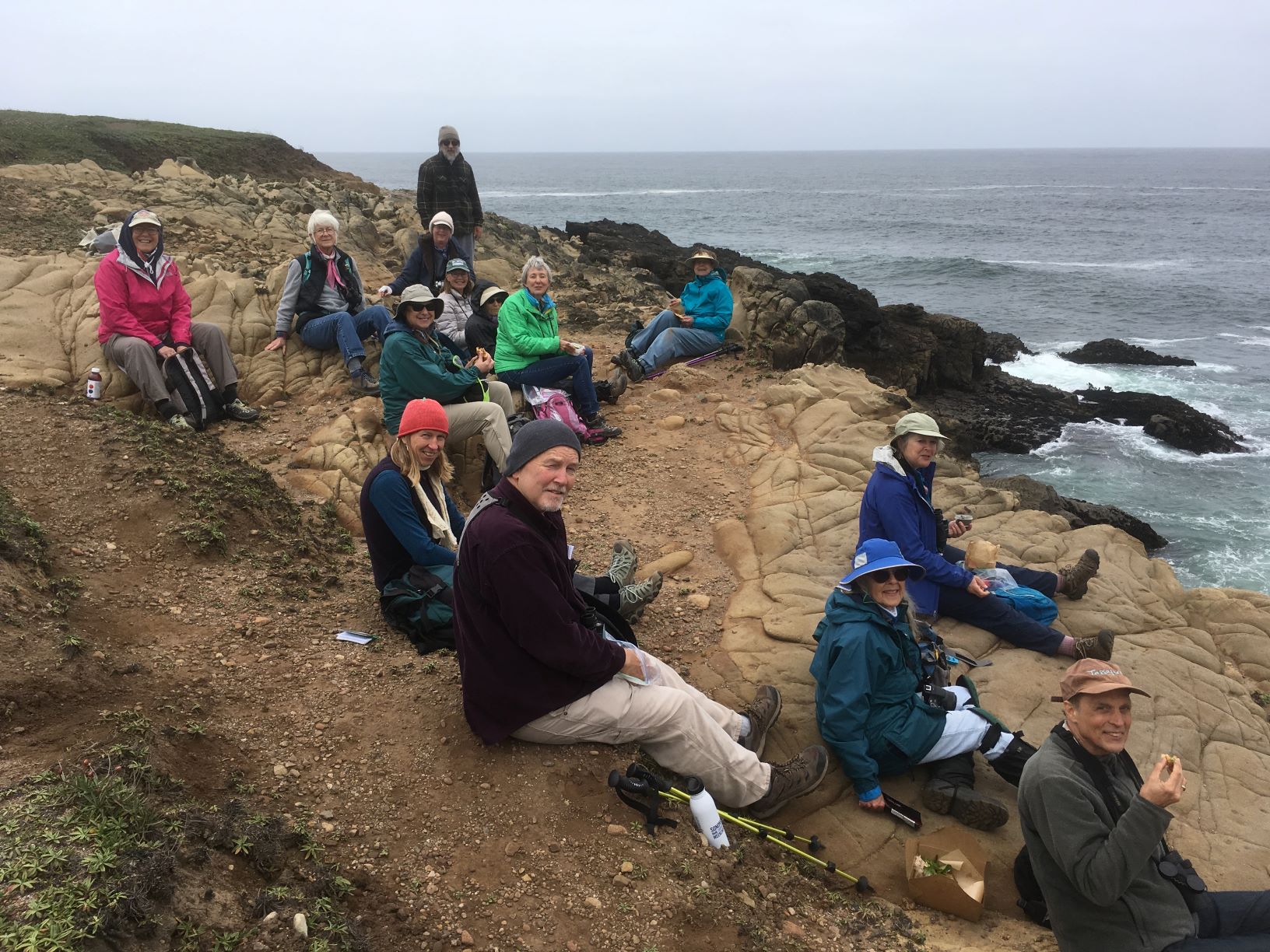
Plant Walks/Field Trips
Spring is upon us and its a great time to see lovely native wildflowers. I want to encourage you to talk a walk on your own.
I want to emphasize mindfulness and safety while you are out in nature. Please:
-Follow Covid guidelines.
-Leave no trace, no littering, pack it in, pack it out.
-Do not remove native plants and flora, Nowildcrafting or foraging.
-Stay on designated trails, and do not disturb wildlife.
-Sanitize shoes after hiking to prevent spread ofpathogens, such as Sudden Oak Death.
-Always bring a water bottle and check for ticks.
-Buy a regional park pass its worth it!!!
Ruthie Saia
Milo Baker Plant Walks
|
|
